Some of the links in this post may be affiliate links.
If you love string of hearts, but don’t have a variegated string of hearts plant, you are missing out! This highly sought after plant with gorgeous pink variegation will be a special addition to any plant collection. Keep reading to find out my best tips on how to care for your variegated string of hearts (or VSOH), and also encourage the pinkest variegation!
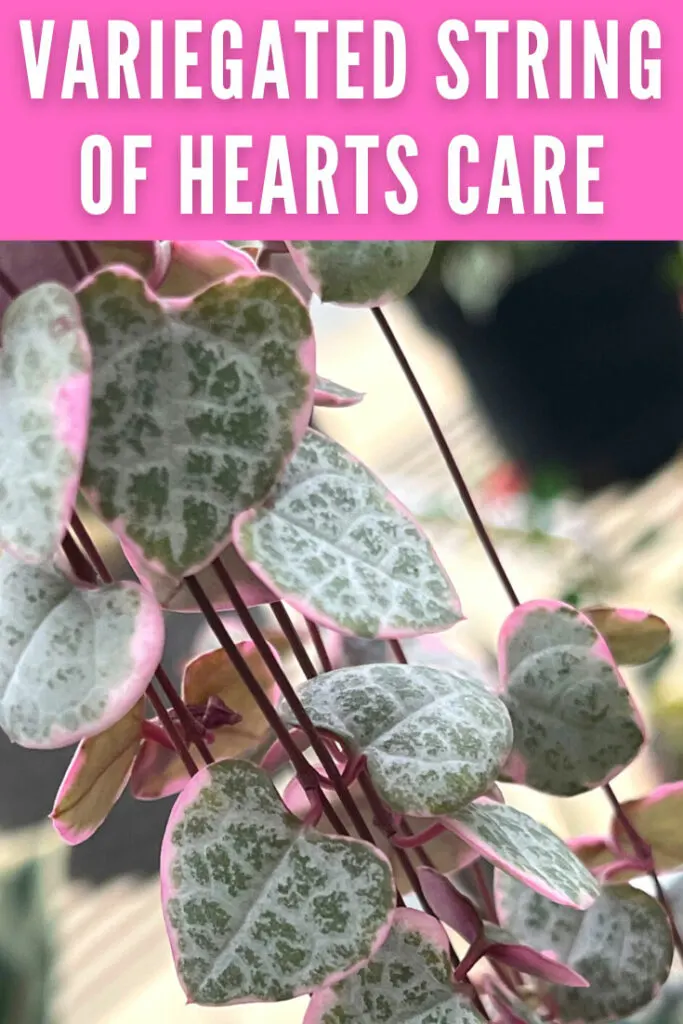
The native range of String of Hearts, or Ceropegia woodii, is Zimbabwe to South Africa. It is a member of the Apocynaceae family of plants (dogbane family).
Table of Contents
VARIEGATED STRING OF HEARTS PLANT CARE
1. LIGHT
If your pink variegated string of hearts is no longer pink, here is why. Your plant is not getting enough light!
I’ll tell you from personal experience that light intensity is so important in order to make sure that your plant stays, or returns, to its gorgeous pink color.
I recommend placing your variegated string of hearts in the sunniest window that you have. At a bare minimum, place it directly in front of an unobstructed eastern or western facing window.
If you have a window with sun all day, this is even better.
GROW LIGHTS
If you don’t have enough natural light, you can effectively supplement with a good grow light, or even use them exclusively.
I’ve achieved the pinkest color by using good grow lights. My plant now resides in my greenhouse and even in there, it has beautiful variegation, but I will be supplementing with grow lights in the wintertime.
2. GROWTH HABIT
Ceropegia woodii f. variegata (Schlechter), commonly known as Variegated String of Hearts, Chain of Hearts, or Pink Rosary Vine, is a succulent, climbing species in nature.
Indoors, it is most commonly grown in a hanging basket as the vines with heart shaped leaves will trail several feet long.
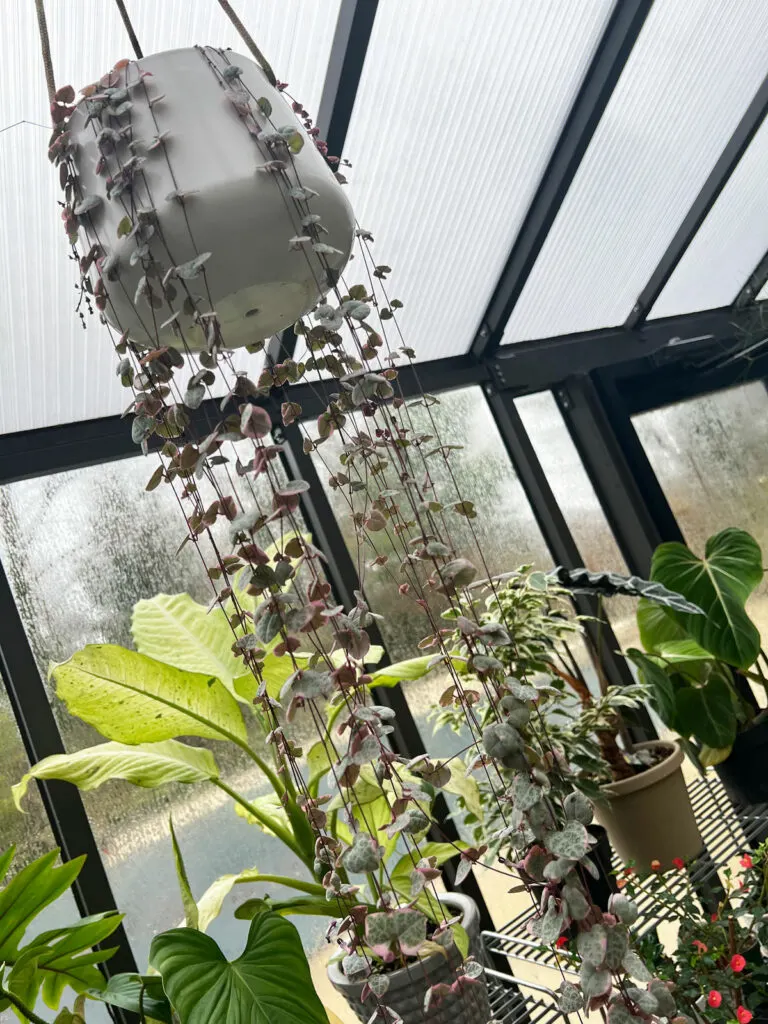
The plant will develop tubers, both on the stems themselves and under the soil. Many times as the plant ages, the tubers can be seen protruding out of the potting mix.
3. WATERING
I’ll get to the soil blends later (which are crucial and directly affect your watering practices), but after situating your plant in sufficient light, always water your VSOH thoroughly and allow excess water to escape the drainage hole.
Then, I would recommend allowing the top quarter of the pot to dry out before watering again.
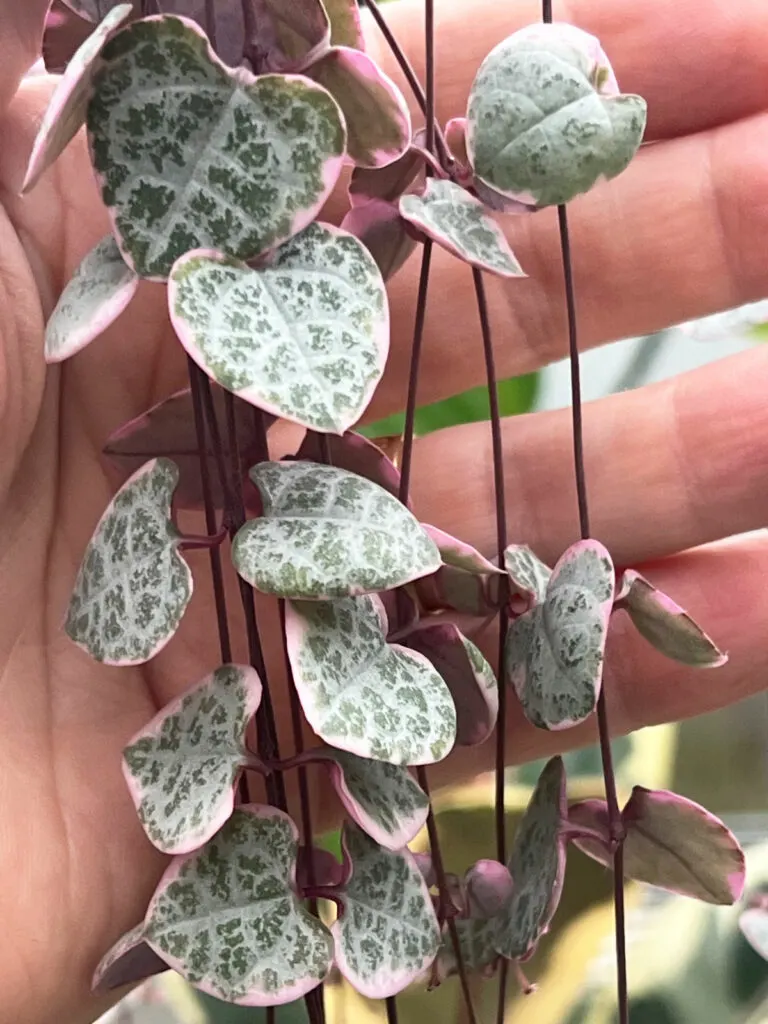
These plants can take going completely dry, but if you prolong this period, many of the leaves will dry up and fall off.
Always feel the potting mix to judge soil moisture. Do not use soil moisture meters as many of them are faulty and very misleading.
4. FERTILIZING
Fertilize during periods of active growth, usually from late winter through Autumn. I love using Dyna-Gro Grow.
It’s an amazing, urea-free and complete fertilizer. I’ve been using this for years with wonderful results, and I highly recommend it not just for VSOH, but for any of your leafy tropicals as well.
5. BEST SOIL FOR VARIEGATED STRING OF HEARTS
A nice, gritty, potting mix that freely drains is very important for your VSOH. I like to use about 2 parts of a cactus/succulent mix with 1 part of Bonsai Jack 1/4″ pumice.
This will give a nicely draining mix for your plant.
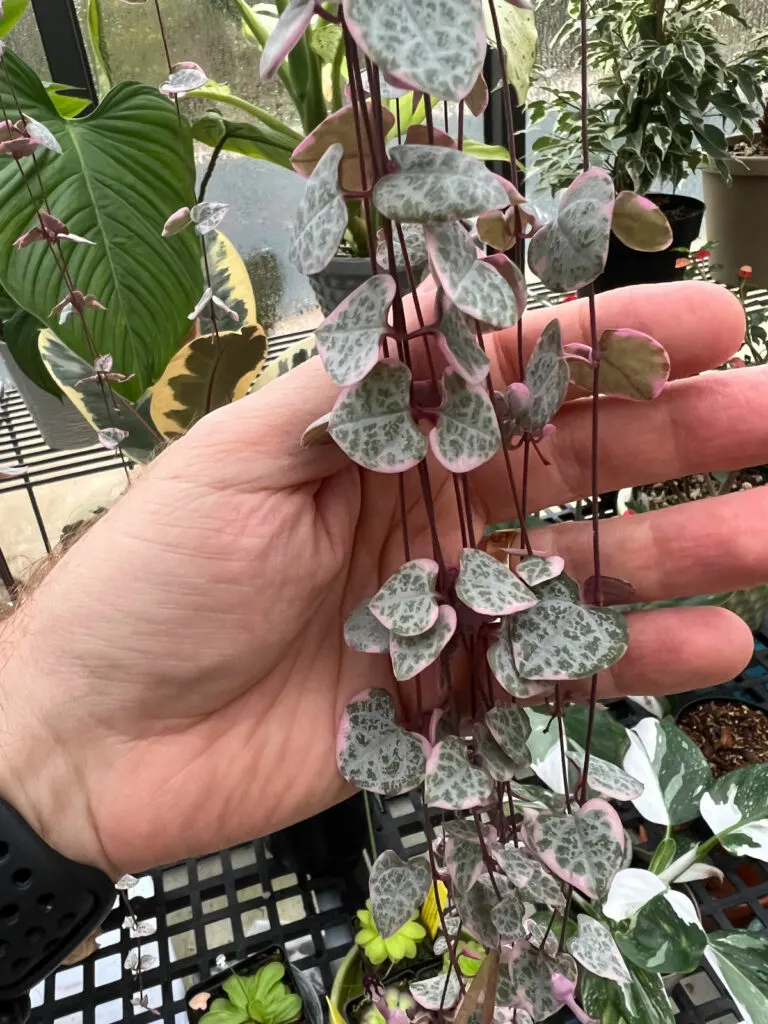
For a more detailed account, check out my post on best soil to propagate and grow string of hearts.
6. REPOTTING
Repot your plant only if it is root bound, or if your plant has been growing in poor conditions and perhaps is in a pot that is too big and started to suffer from root rot.
Allow the root system size dictate how big of a pot your plant should be in.
When your plant is pretty root bound, you can move up to only ONE pot size bigger. For example, if your plant has been growing in a 4 inch diameter pot, choose a 6 inch diameter pot as its new home.
Don’t go any bigger because the potting mix will take too long to dry out and you’ll risk root rot.
7. POT TYPE
Depending on your growing conditions, you may want to use terra cotta pots to grow your VSOH. If terra cotta pots dry out too quickly under your growing conditions, you can always use a plastic pot, glazed ceramic pot, or any other pot type.
And always choose a pot with a drainage hole.
Terra cotta pots are very beneficial because they’re porous and allow air to the roots, and the only major downside is that they can tend to dry out very quickly.
If you can keep up with the watering though, your plant will grow very well in these pots.
8. TEMPERATURE
A good temperature range for this plant is 45-100°F (7-38°C). Average indoor temperatures will be just fine for this plant.
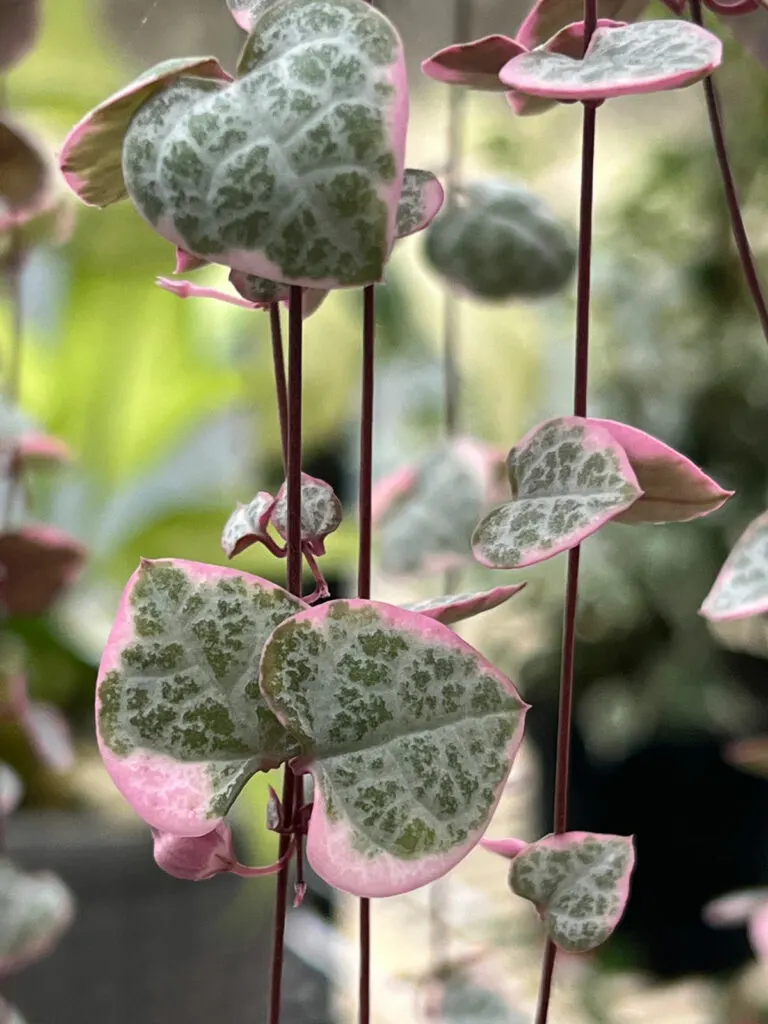
9. HUMIDITY
Your plant will not need any particular attention to humidity and average indoor humidity will suffice.
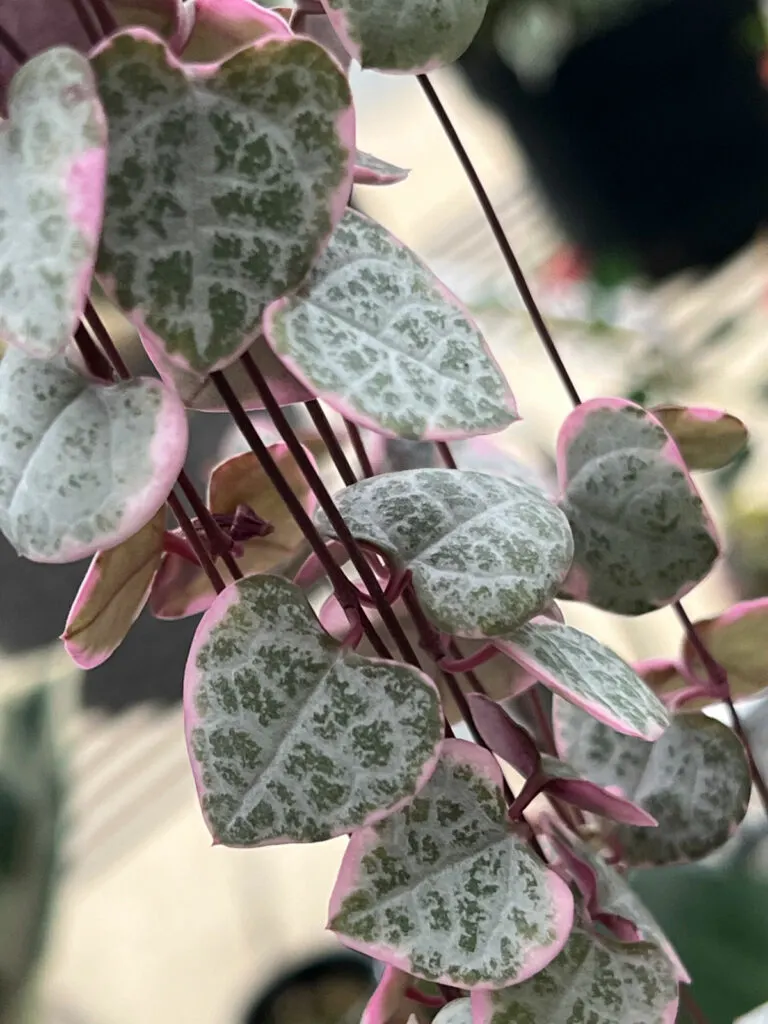
10. PRUNING
Don’t be afraid to prune off any unsightly vines. This will only benefit the growth of your plant and cause it to be more vigorous.
If you have any vines that have become leafless at the base and only have leaves on the tip, don’t be afraid to prune that whole vine off, and you can always use the growing tip that has leaves in order to propagate the plant (see the next section on propagation).
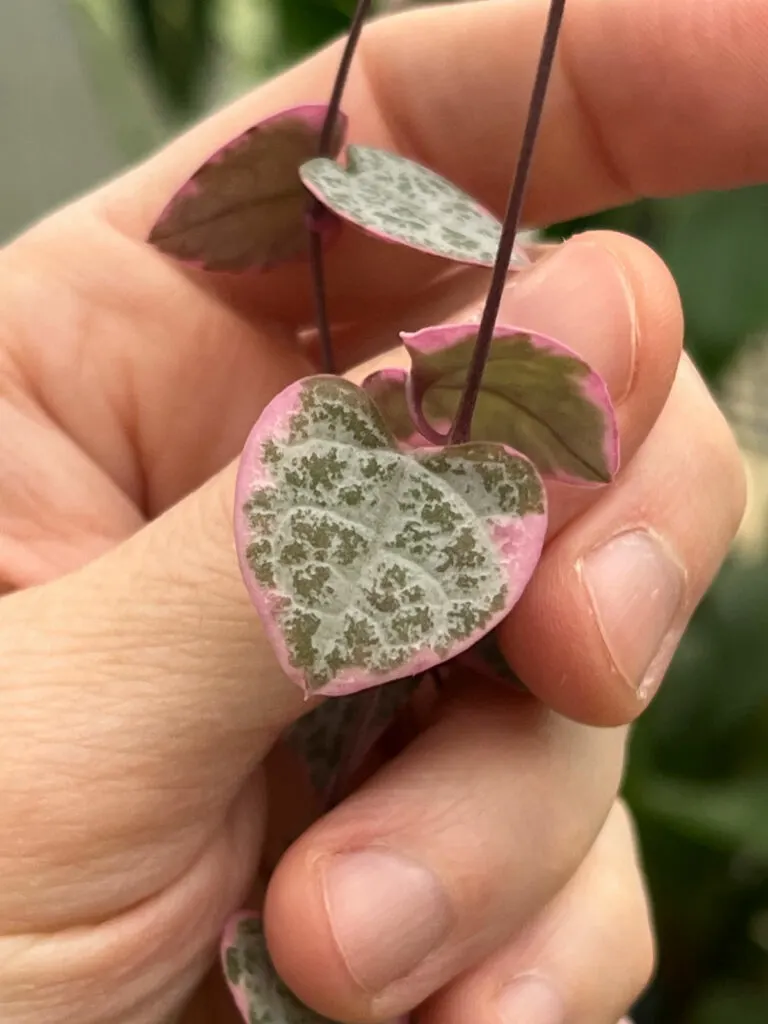
11. VARIEGATED STRING OF HEARTS PROPAGATION
There are many ways to propagate your variegated rosary vine. Be sure to check out my blog post on 6 ways to propagate your string of hearts.
The most efficient way to propagate your plant, especially rarer string of hearts like the variegated version, is to use a technique called the butterfly method of propagation. Find out how to do this step-by-step with photos in my butterfly propagation blog post.
It’s a super easy method and you will get a lot more plants with this technique!
12. FLOWERS
Although the foliage is the true star, the flowers are also beautiful. The pink and purple trumpet shaped flowers adorn the plant throughout the length of their stems.
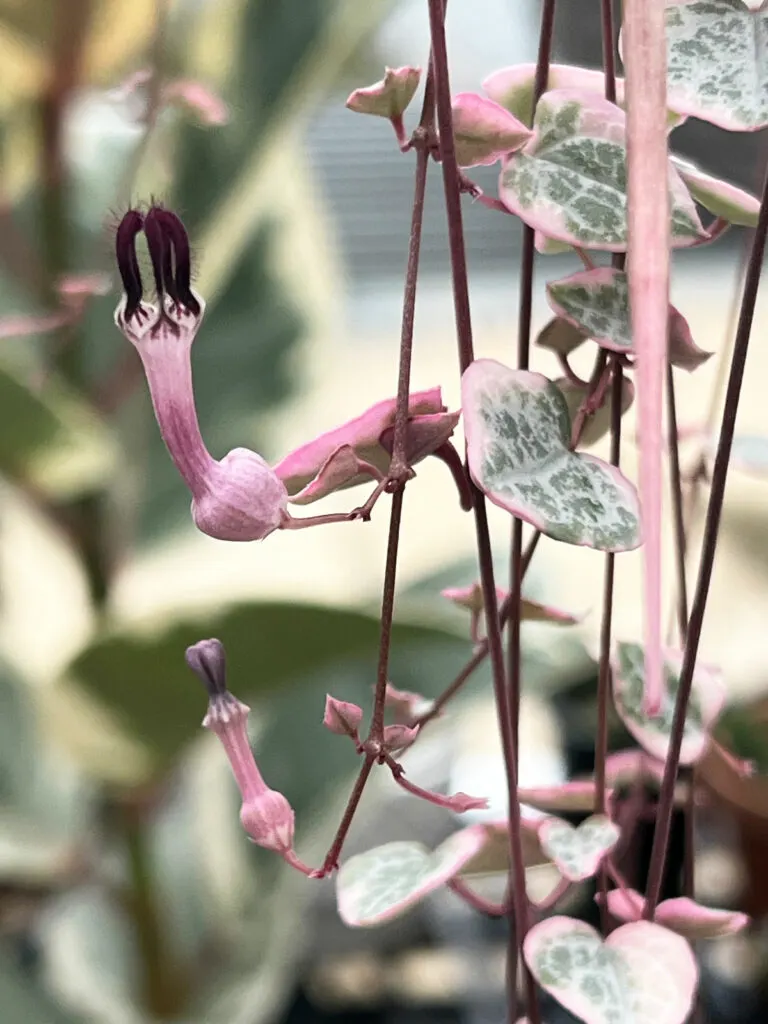
13. SEED PODS
Sometimes you will see seed pods form on your plants, and they will look like long, thin protrusions like in the photo below of my plant in my greenhouse.
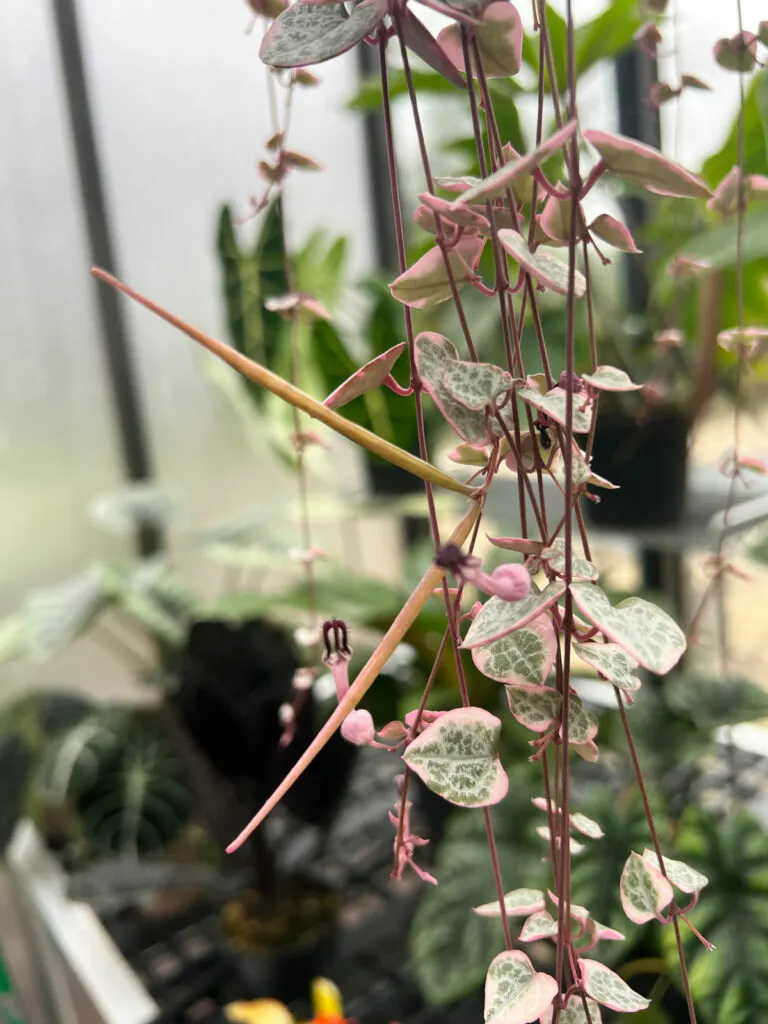
Once the seed pods are ripe, they will open up to expose the seeds, which form on little parachutes similar to dandelions. In nature, the wind will help to disperse the seeds.
Once they open, you can try sowing the seeds, though the seedlings may or may not be variegated.
FREQUENTLY ASKED QUESTIONS
1. Why is variegated string of hearts so expensive?
This is simply because they are not as common as the plain green variety, and they are also in demand, which will drive up the price.
2. How fast do VSOH grow?
Under bright light and good growing conditions, they can have a pretty moderate growth rate. In poor conditions, they will grow much more slowly.
3. Is variegated string of hearts toxic?
This plant is considered non-toxic, so you shouldn’t worry too much if you have any curious pets that nibble on your plants.
4. Is the care different between variegated string of hearts and the plain green version?
The care is identical, however the variegated version will require higher light in order to maintain the beautiful variegation.

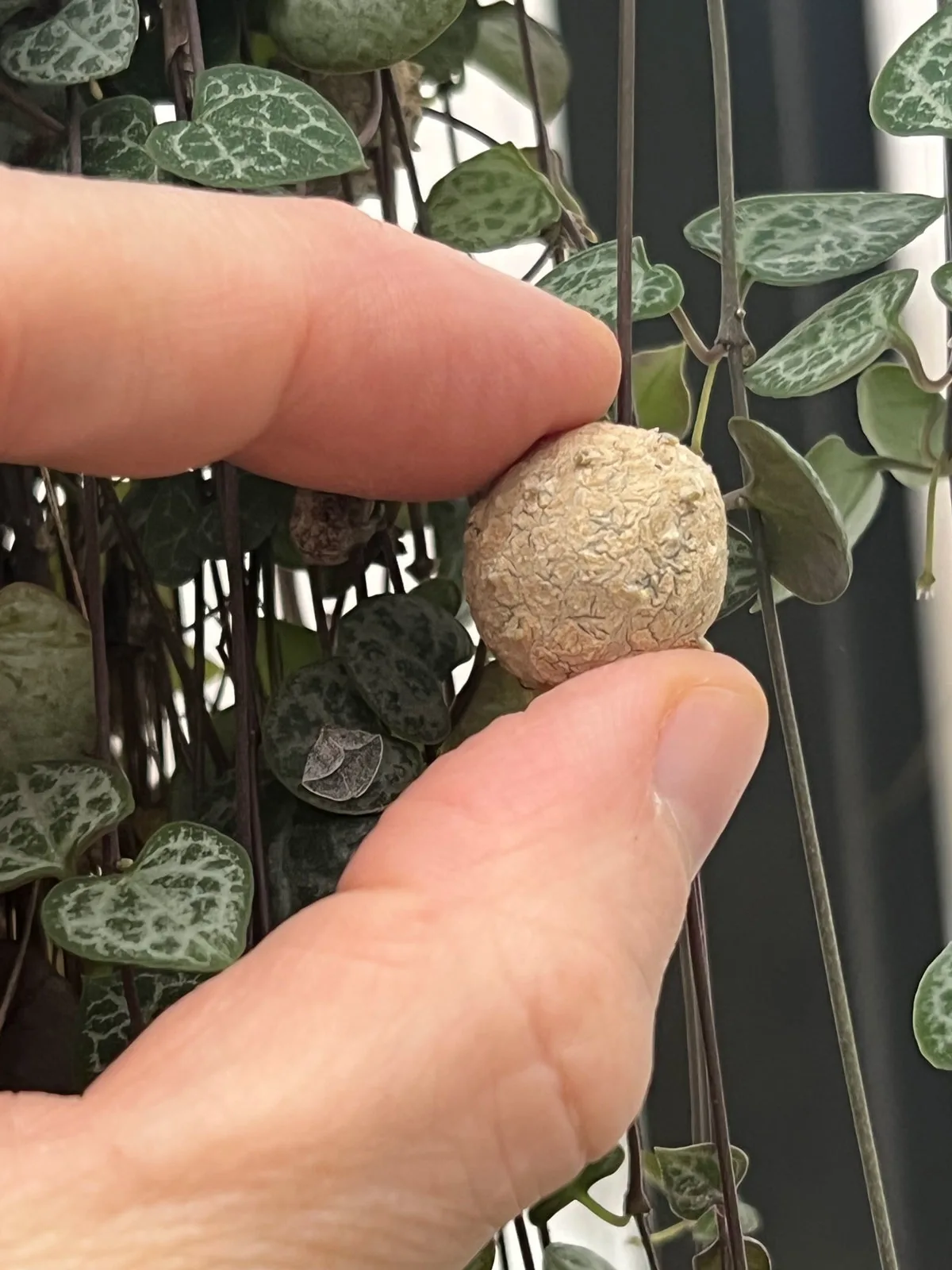
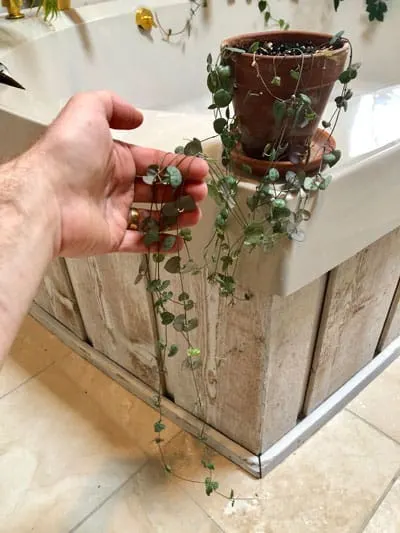
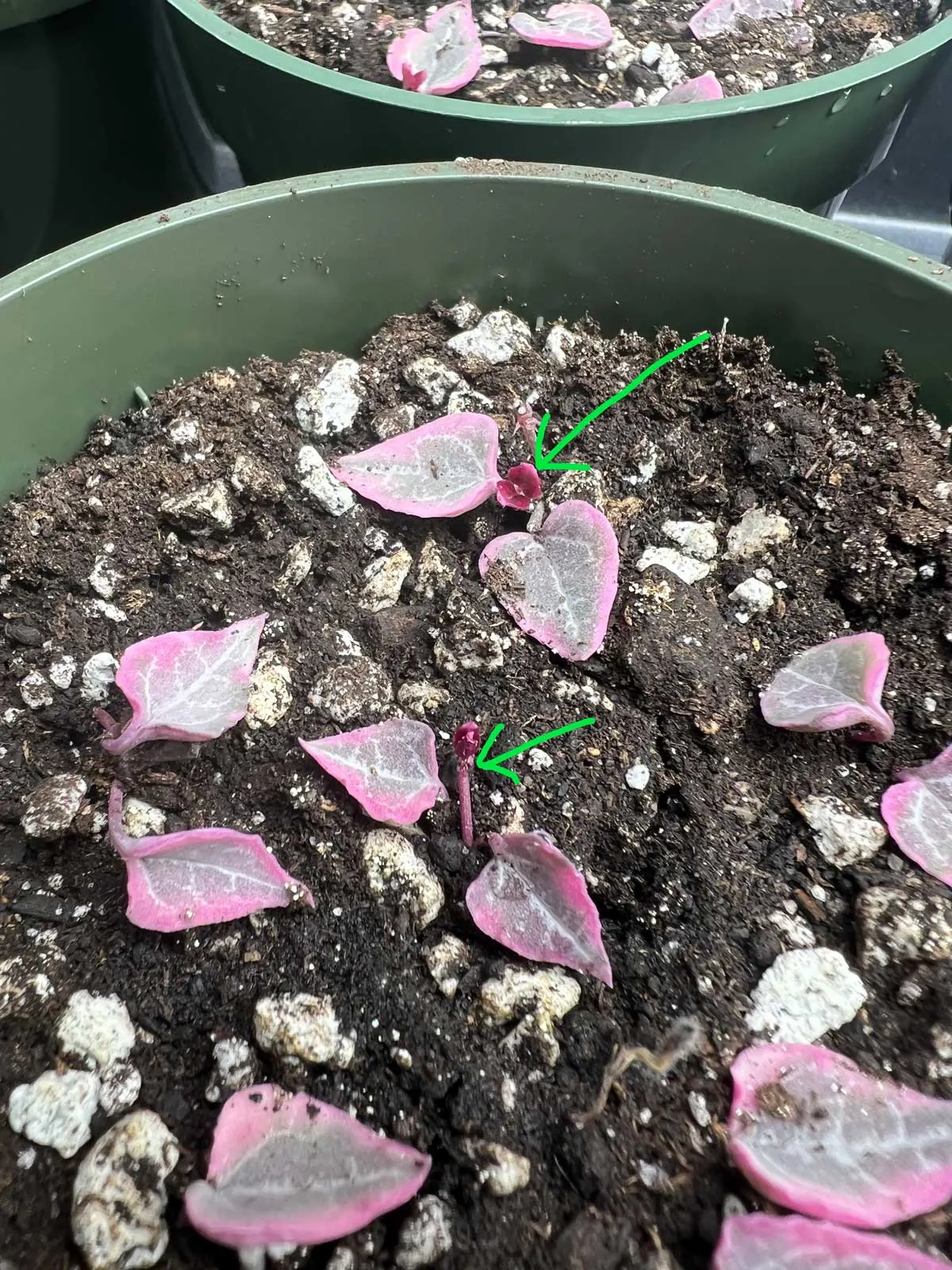
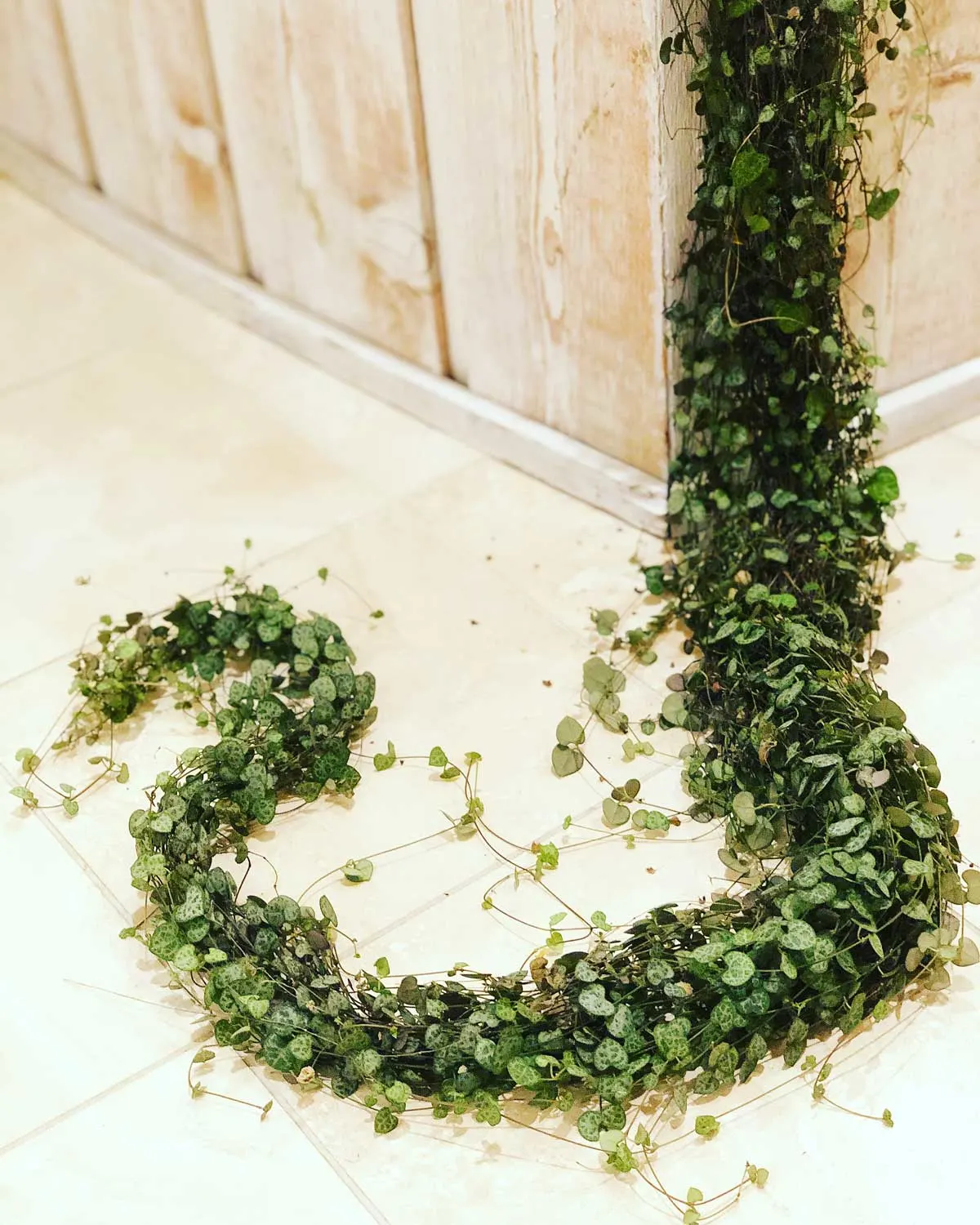
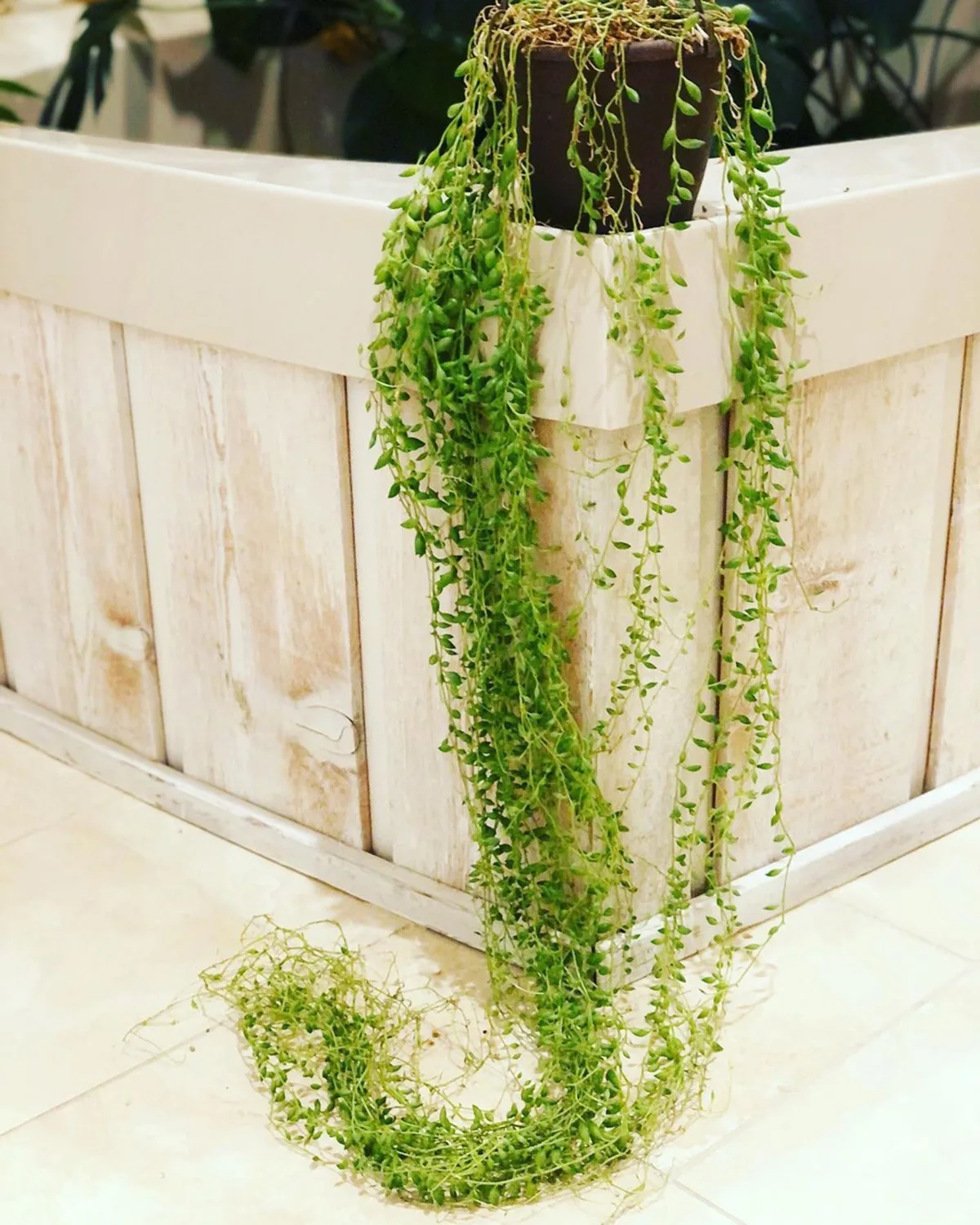
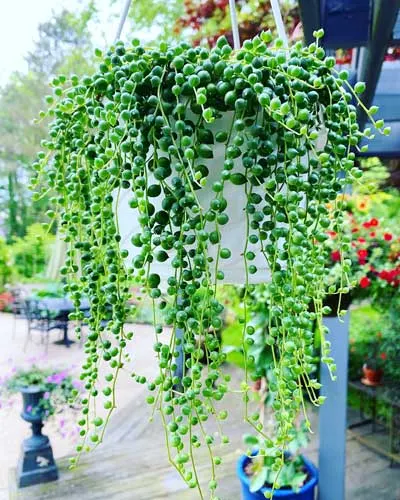
Teresa
Tuesday 14th of March 2023
I find vsoh needs more water than the non veragated I water vsoh 2 times more
befor I water non veragated an they are in same window...